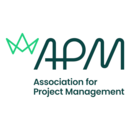Tackling unconscious bias; Women's History Month
March is Women’s History Month; an opportunity to talk about women’s contribution to history but also to reflect on issues relevant to women in the present. Association for Project Management (APM) spoke with Styliana Kiliaris, Committee Member of APM’s Women in Project Management Specific Interest Group, about gender equality in the project profession and leadership opportunities for women.
Styliana Kiliaris joined the project profession approximately three years ago, having previously worked in accounting. She was drawn to a career in project delivery because – as she put it – it gave her the chance to see what the numbers on the page are actually contributing to.
Styliana is now a Senior Project Controls Engineer working within the real estate sector. She talks about her work with great enthusiasm, and is thinking long-term about professional development and career progression. But she feels there’s a discrepancy in her sector between the number of men and women in project leadership roles.
Aggregated data from APM’s most recent surveys of project and programme professionals indicates a sizeable majority of people working in the profession are men. APM’s most recent Salary and Market Trends Survey reported that, while there are reasonably even splits for mid-level and administrative roles, the balance skewed heavily in favour of men when it comes to senior roles such as Head of Projects, Project Director and PMO Director. The survey report notes that the amount of women in these roles is increasing, but this isn’t being observed everywhere, as Styliana attests.
“In my previous project and on my current project, all my bosses are male,” she recalls. “Those [salary survey] figures sound quite high to me.”
While Styliana agrees that more can be done to encourage women and non-binary people into the profession, she feels unconscious bias – the act of making decisions or judgements based on prior experience, personal beliefs or assumptions without realising it – may be a factor when it comes to men taking the majority of leadership positions.
“There is a lot of unconscious bias around,” she said. “People probably don’t realise, but I think a lot of men are getting promotion opportunities over women.
“Previously, I’ve been involved with job interviews where both the male and female applicants had children. When debating who was best for the role, it was mentioned that the female had children, but there was no mention that the male did. This is a great example of unconscious bias. Let’s start to question these unconscious biases and call them out. I think there is a lot to learn around this as we don’t realise when we are doing it.”
With equality and diversity high on the business agenda, Styliana has taken opportunities for inclusivity training and worked as an inclusivity champion; something to which she says project team members responded well. She has also been encouraged by what she sees as greater openness and a willingness to learn among male colleagues and line managers with whom she’s worked over the years.
She explained: “I have definitely seen a positive change over time. In one of my first graduate jobs, I was asked by a male during the interview if I plan to have children and when I plan on doing so.’ I doubt that would happen today.
“I think we’re seeing a generation now where things are changing. A positive that has emerged post-pandemic is that men are doing more traditionally ‘female’ tasks, like the school run.”
Will the profession ever reach a truly even gender split within leadership roles? Styliana is hopeful, but sees this as a long-term aspiration. For now, she is calling on men in the project profession to become allies to women, not only by encouraging more women into the profession but by giving them equal opportunities to demonstrate their abilities, which will help create pathways to progression.
The importance of diversity and inclusion in project management is well documented. Styliana is confident encouraging more diversity of thought on projects will ultimately benefit everyone, including end users.
“I’m a big believer in having the right person for the job…no one wants arbitrary targets. While I would like to see an even gender split one day, any increase over where we are now will be welcomed.
“A lot of project management is people management,so the broader range of people you have on your team, the greater the sharing of experiences and knowledge, the better.
“That’s what is so special about the Women in Project Management Specific Interest Group (WiPM SIG). It’s about women in projects, but the SIG promotes inclusivity for everyone, regardless of race, gender or age.”
Join the conversation
APMs WiPM SIG is committed to the development and promotion of women in project, programme and portfolio management environments. The group promotes investment in gender diversity to create opportunities for all professionals to develop their careers. You can read more about this SIG and follow for the latest updates here.
This arttcle appears on the APM news and blog site as "Women’s History Month: ‘Let’s tackle unconscious bias in the project profession’ dated March 18, 2024.
--Association for Project Management
[edit] Related articles on Designing Buildings
- Celebrating women's history month.
- Inspiring inclusion on International Women's day and for the month of March.
- Is social media the new way to plug the gender skills gap?
- Reflections on the Women in Project Management conference 2022 into 2023.
- Strategies for attracting women into project management.
- Why so many women leave engineering.
- Women Community.
- Women in Construction – the critical solution to a skills shortage.
- Women in Project Management Conference.
Featured articles and news
Ebenezer Howard: inventor of the garden city. Book review.
Grenfell Tower fire – eight years on
A time to pause and reflect as Dubai tower block fire reported just before anniversary.
Airtightness Topic Guide BSRIA TG 27/2025
Explaining the basics of airtightness, what it is, why it's important, when it's required and how it's carried out.
Construction contract awards hit lowest point of 2025
Plummeting for second consecutive month, intensifying concerns for housing and infrastructure goals.
Understanding Mental Health in the Built Environment 2025
Examining the state of mental health in construction, shedding light on levels of stress, anxiety and depression.
The benefits of engaging with insulation manufacturers
When considering ground floor constructions.
Lighting Industry endorses Blueprint for Electrification
The Lighting Industry Association fully supports the ECA Blueprint as a timely, urgent call to action.
BSRIA Sentinel Clerk of Works Training Case Study
Strengthening expertise to enhance service delivery with integrated cutting-edge industry knowledge.
Impact report from the Supply Chain Sustainability School
Free sustainability skills, training and support delivered to thousands of UK companies to help cut carbon.
The Building Safety Forum at the Installershow 2025
With speakers confirmed for 24 June as part of Building Safety Week.
The UK’s largest air pollution campaign.
Future Homes Standard, now includes solar, but what else?
Will the new standard, due to in the Autumn, go far enough in terms of performance ?
BSRIA Briefing: Cleaner Air, Better tomorrow
A look back at issues relating to inside and outside air quality, discussed during the BSRIA briefing in 2023.
Restoring Abbotsford's hothouse
Bringing the writer Walter Scott's garden to life.
Reflections on the spending review with CIAT.
Retired firefighter cycles world to raise Grenfell funds
Leaving on 14 June 2025 Stephen will raise money for youth and schools through the Grenfell Foundation.
Key points for construction at a glance with industry reactions.
























